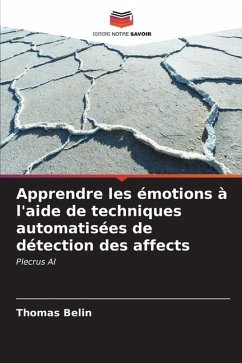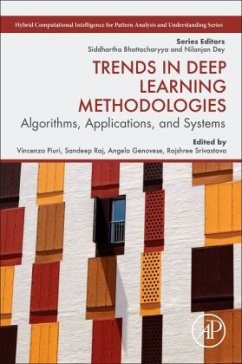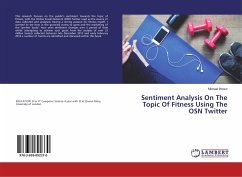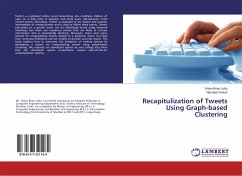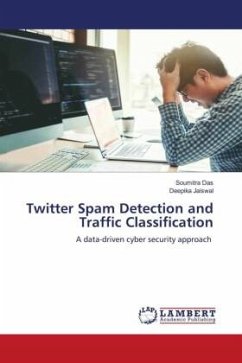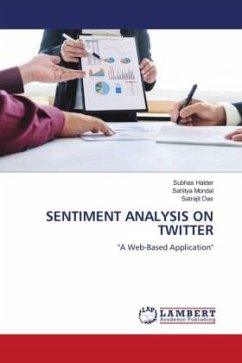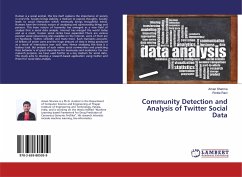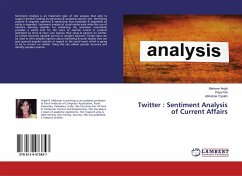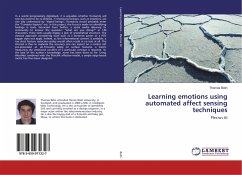
Learning emotions using automated affect sensing techniques
Plecrus AI
Versandkostenfrei!
Versandfertig in 6-10 Tagen
37,99 €
inkl. MwSt.

PAYBACK Punkte
19 °P sammeln!
In a world progressively digitalised, it is arguable whether Humanity will one day need to be re-defined. If chemical processes, such as emotions, are one day understood by "digital beings", Humanity would probably enter the "Transisto-Sapiens" era. In this project, the focus is made on identifying feelings in texts. Extracted from Twitter, a social media allowing its community to answer the question: "what are you doing?" in 140 characters, these texts usually display a lack of grammatical structure. The classical approach considering tools such as a sentence parser or a POS tagger does not a...
In a world progressively digitalised, it is arguable whether Humanity will one day need to be re-defined. If chemical processes, such as emotions, are one day understood by "digital beings", Humanity would probably enter the "Transisto-Sapiens" era. In this project, the focus is made on identifying feelings in texts. Extracted from Twitter, a social media allowing its community to answer the question: "what are you doing?" in 140 characters, these texts usually display a lack of grammatical structure. The classical approach considering tools such as a sentence parser or a POS tagger does not apply. Indeed, as low informational content is available, a too strict feature reduction policy would often result in no text at all. The interest is thus to evaluate the accuracy one can expect on a corpus not pre-processed at all. Focusing solely on surface features, a metric measuring the emotional content of a particular concept is required. To the best of the author's knowledge, none hasbeen done so far. Using WordNet combined with the Plutchik affective model, a simple edge-based metric has thus been designed.



